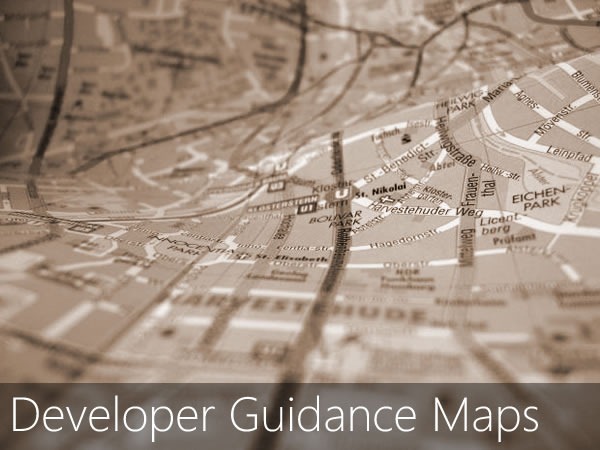When I took this developer evangelism job and returned to the Microsoft platform almost two years ago (after an eight-year hiatus) one of the first things I had to deal with was the sheer size of it. Even people who’ve been working in a certain area of the platform get lost when they venture out to other parts (say, when a desktop developer decides to give web development a try).
If you’re thinking about exploring unfamiliar parts of the Microsoft platform and don’t know where to start, try using one of the Developer Guidance Maps. Like city maps, they give you an at-a-glance view of the “lay of the land” and make certain useful “landmarks” – different types of documentation, key topics on developing for a specific technology and notes on features you need to know about – easy to find.
Built by the people at Microsoft’s Connect Innovation Center, they’re using the Developer Guidance Maps as a way to model, prototype and test ways to find, organize and share guidance for developers in a meaningful way. I find them pretty useful, both for myself as well as places to point developers with questions.
The Developer Guidance Maps break down the platform into a number of subject hubs:
You can also choose to cruise the Developer Guidance Maps by technology:
- ADO.NET Developer Guidance Map
- ASP.NET Developer Guidance Map
- Silverlight Developer Guidance Map
- WCF Developer Guidance Map
- Windows Azure Developer Guidance Map
- Windows Client Developer Guidance Map
- Windows Phone Developer Guidance Map
And you can also go through them via resource type:
Give the Developer Guidance Maps a look!
For more information, see:
